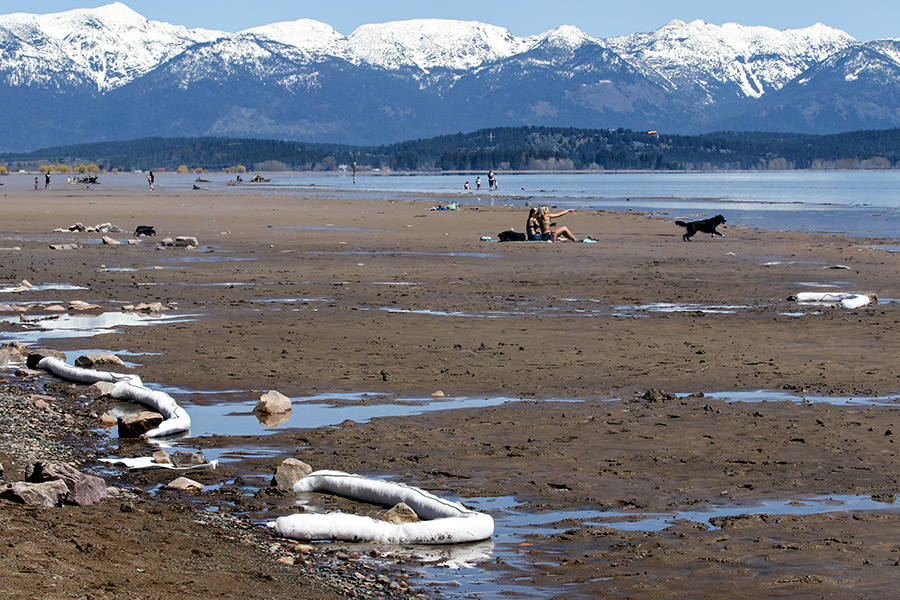BNSF, EPA Investigating Oily Substance Along Flathead Lake Shoreline
BNSF, EPA responding to unknown sheen along stretch of shoreline near Somers Superfund site
By Dillon Tabish
Officials from BNSF Railway and the U.S. Environmental Protection Agency are responding to an unidentified sheen on a small section of the north shoreline of Flathead Lake near the contaminated Superfund site in Somers.
The EPA has deployed an emergency response coordinator, who is expected to arrive Friday, according to Robert Moler, community involvement coordinator with the agency.
Details of the suspected substance and the scope of its presence remain scant as of Thursday afternoon. BNSF is conducting a site assessment with water and ground sampling to identify the material. Contractors placed absorbent boom and pads along a roughly 30-yard stretch of shoreline where the sheen was observed.
Whether the identified substance is potential contamination remains unknown at this time, although the initial indication is that it is not suspected to be chemical or petroleum sources, according to a BNSF spokesperson.
Ross Lane, BNSF public affairs director, said the “initial indication suggests that the sheen was caused by degraded organic or naturally occurring material. Pooled water, coupled with low water levels and high temperatures can lead to decay of organic material that then forms a biological residue. That residue can mimic a chemical or petroleum like sheen.”
Lane issued a statement to the Beacon Thursday afternoon:
“BNSF has received a report of a sheen spotted on the Flathead Lake shoreline near Somers Beach. The cause of the sheen is currently unknown, but initial field indications suggest the sheen exhibits characteristics common to natural biological sources versus chemical or petroleum sources. Due to its proximity to the former Somers Tie Treating Plant, BNSF has completed precautionary measures to contain and remove the material, including the deployment of boom and absorbent materials. We are currently completing analytical testing to formally identify the material in coordination with the EPA and Montana DEQ.”
Earlier this week the EPA received reports of an unknown substance with an oily sheen surfacing along the shoreline. The EPA notified BNSF, which owns adjacent property, including the former Somers Tie Plant, an 80-acre site about 1,200 feet from the lake’s shoreline where wooden railroad ties were chemically treated for nearly a century before a lengthy environmental cleanup process occurred.
Great Northern Railway, BNSF’s predecessor, established the plant in 1901 and operated it until 1986. The plant produced wooden railroad ties that were coated with creosote. Other chemicals used in the tie-making process included zinc chloride and petroleum preservative mixtures. After a tie was coated with protective chemicals it was allowed to dry out on a “drip track.” According to an EPA report, the process produced up to 1,000 pounds of sludge every two years that impacted both the soil and groundwater. The contamination was discovered in 1984 and later that year the area was designated an EPA Superfund site.
In 1994, the EPA, DEQ and BNSF contractors began excavating and treating 50,000 cubic yards of soil and the groundwater underneath the site. Soil remediation was completed in 2002. The water treatment system continued to operate until 2007, when the railroad requested that it be turned off. Because the soils are so tight in that area, the groundwater moved very slowly and was hard to treat. Since then, government agencies and the railroad have monitored the water’s condition.
Justin Franz contributed to this report.